#pogonomyrmex
Text
Harvester ants render first aid for their pupating sister
9K notes
·
View notes
Text
As anthropologist Jay Miller has observed, "Hunting tribes were also astute enough observers . . . to notice that other Animal People had hermaphroditic members, and often equated these with the berdaches [two-spirits]."⁶⁵
65. Miller, "People, Berdaches, and Left-handed Bears", p. 286. Whether direct knowledge of animal homosexuality (rather than transgender) has contributed to indigenous belief systems remains an open question, although it seems likely that observation of a species' same-sex activity may also have been a factor in its status as a shamanic "power animal". Although there are no specific reports of this in the ethnographic literature (which is, however, notoriously incomplete with regard to matters of sexuality, particularly homosexuality), there are several suggestive cases. In a number of Native American cultures, animals are selected as symbolically important for shamanistic practices because their biology and behavior exhibit particularly salient or "unusual" features. In the Pacific Northwest culture region, for example, "animals that shamans relied on as spirit helpers [including shore birds, sea mammals, otters, and Mountain Goats] were those that inhabit border areas of the environment such as the shoreline, the water's surface, or the tops of trees. Their behavior was thought to represent the supernatural ability to move through the different zones of the cosmos" – echoing the shaman's ability to traverse different worlds. (This also corresponds to the well-established ecological principle in Western science that the greatest diversity, flexibility, and environmental richness is to be found in the border zones between major ecosystems, such as the region where forest meets grassland.) This is especially true for the (American) oystercatcher, whose preeminent status as a spirit animal in Tlingit shamanism is based not only on its inhabiting border zones, but also its furtive behavior and habit of being among the first creatures to sound alarm at the approach of danger (likened to the shaman's function as "guardian" for his or her people) (Wardwell, A. [1996] Tangible Visions: Northwest Coast Indian Shamanism and Its Art, pp. 40-43, 96, 239 [New York: Monacelli Press]; for similar observations concerning totemic or shamanic animals in Yup'ik and New Guinean cultures, see Fienup-Riordan, Boundaries and Passages, pp. 124, 130-31, and Jorgensen, "Echidna and Kuyaam", pp. 374, 378. Homosexuality is also part of the biological repertoires of many of these species (e.g., various shore birds, sea mammals, and Mountain Goats) or else of their close relatives (e.g., the [Eurasian] Oystercatcher). It is possible, therefore, that observed sexual variance in animals – paralleling the shaman's straddling of sexual boundaries – might also have contributed to the spiritual importance of such creatures. Another interesting example concerns red ants, which feature prominently as shamanic helpers in a number of indigenous cultures of south-central California (all of which, incidentally, recognize two-spirit people). The religious and cultural importance of ants is tied to their powerful medicinal and hallucinogenic properties as well as their use in ritual activities. This includes the extraordinary practice of swallowing large quantities of live ants to induce visions and the acquisition of spirit-animal helpers. Although no homosexual activity has yet been reported for these species (identified as belonging to the genus Pogonomyrmex), nor is human gender or sexual variance directly associated with these ant-related beliefs or practices, there are some intriguing clues. Recently, for examples, homosexual activity was discovered in a different species of Red Ant (Formica subpolita) endemic to the semidesert regions of the western United States (O'Niell 1994:96). Moreover, among the Kawaiisu people (where shamanic ant practices are especially prominent), unusual habits of animals are singled out as a potent spiritual sign, and two-spirit people (who may occupy positions of power, e.g., as chiefs) are reported to be particularly attuned to such animal behaviors (Groark, K. P. [1996] "Ritual and Therapeutic Use of 'Hallucinogenic' Harvester Ants [Pogonomyrmex] in Native South-Central California", Journal of Ethonobiology 16:1-29;
Zigmond, M [1977] "The Supernatural World of the Kawaiisu", pp. 60-61, 74, in T. C. Blackburn, ed. Flowers of the Wind: Papers on Ritual, Myth, and Symbolism in California and the Southwest, pp. 59-95 [Socorro, N. Mex.: Ballena Press]). Once again, it is not unreasonable to suppose that indigenous knowledge or observations of homosexuality (or other sexual variance) in red ants might have been an additional factor in their elevation to religious prominence. Certainly these examples are highly speculative, but they suggest some fascinating connections between animal biology, shamanic practices, and two-spiritedness that deserve further investigation.
"Biological Exuberance: Animal Homosexuality and Natural Diversity" - Bruce Bagemihl
#book quote#biological exuberance#bruce bagemihl#nonfiction#anthropologist#jay miller#people berdaches and left handed bears#hermaphrodite#two spirit#shamanism#red ant#hallucinogens#oystercatcher#tlingit#yup'ik#new guinea#pogonomyrmex#formica subpolita#kawaiisu
2 notes
·
View notes
Text
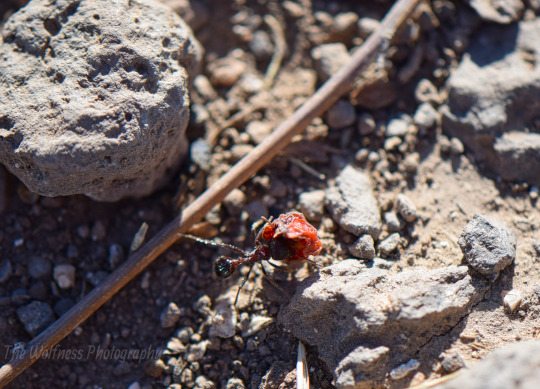
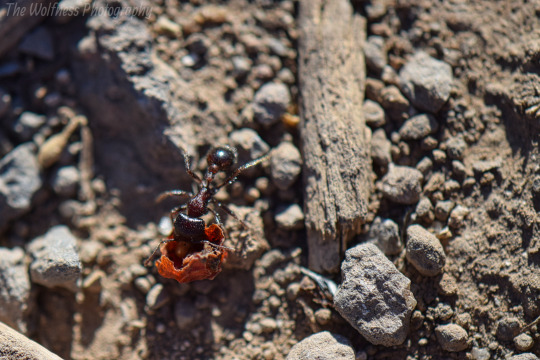

Desert harvester ant (Pogonomyrmex rugosus)
#nature#nature photography#macro#macro nature#macro photography#up close#up close photography#close up#close up photography#insect#insect photography#ant#ant photography#desert nature#sonoran desert#Desert harvester ant#Pogonomyrmex rugosus#photographer on tumblr#original photography#original photographers#original photography on tumblr#original photography blog#US#United States#united states of america#Arizona
9 notes
·
View notes
Text
Bug Hunting: June 2022
Bug Hunting: June 2022
it’s been far too long since I went on a bug hunt in my own yard. Even though we moved in here to the Crooked House in late spring, Texas time, I was too busy to find my camera (it has been located) or even to do what I did this morning and go out with the cell phone on macro setting.
Perhaps it’s a sign, then, that I had an uncontrollable urge to spend my morning break hunting for the little…
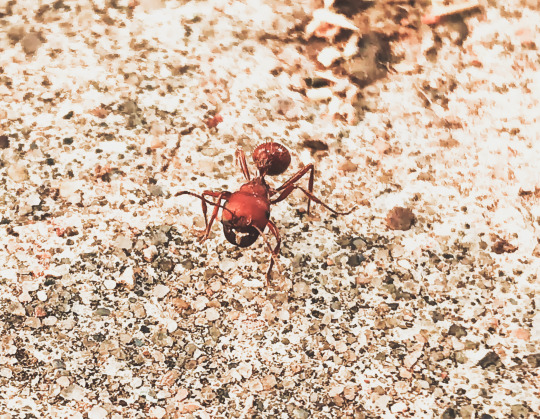
View On WordPress
0 notes
Text


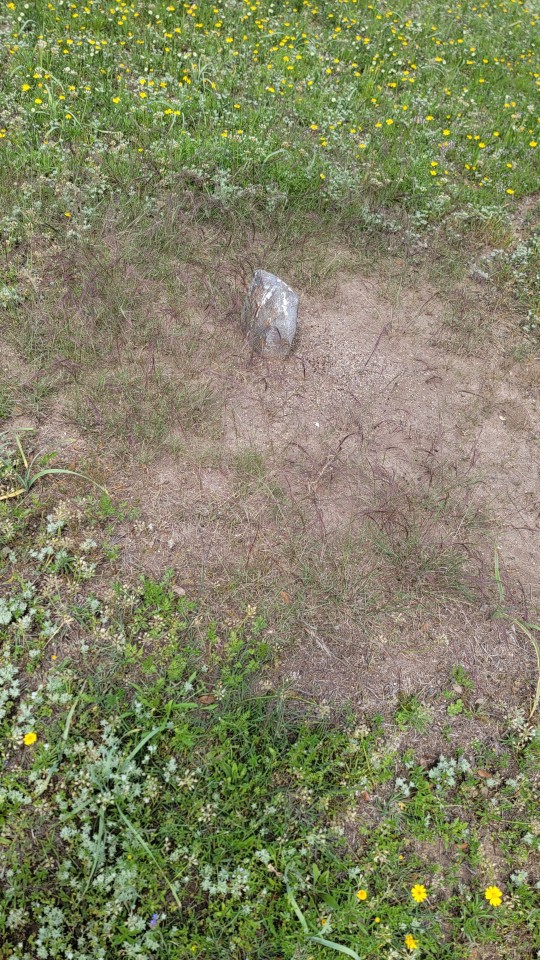
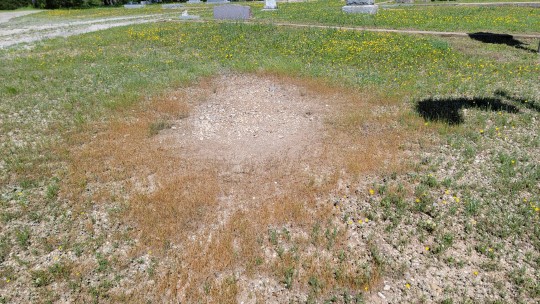
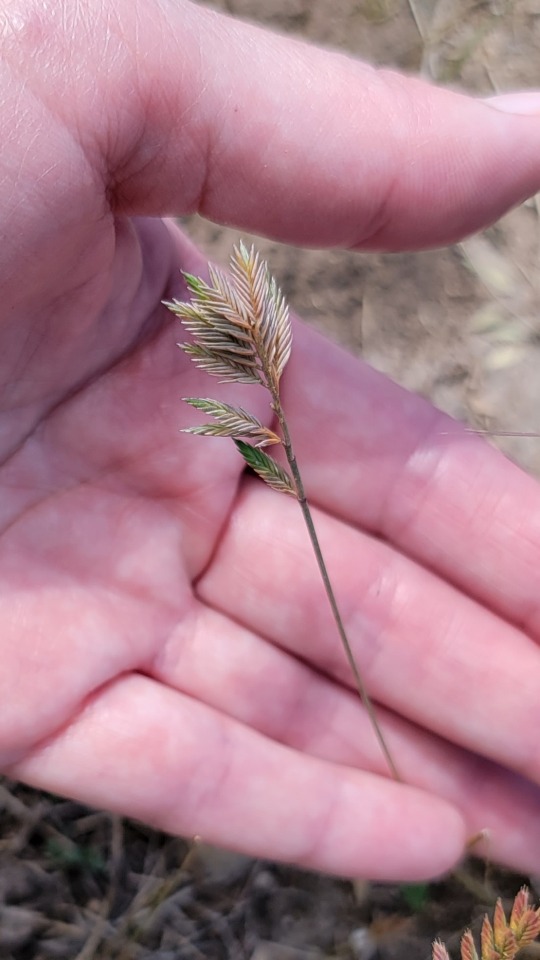

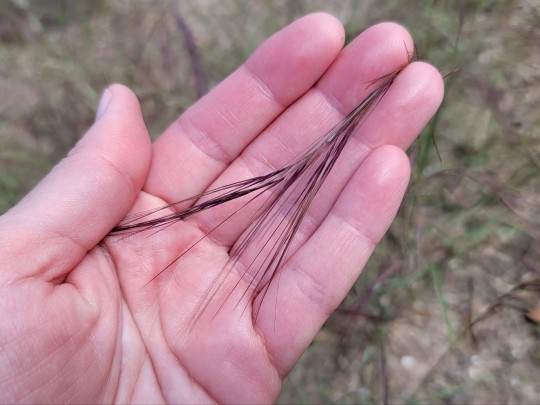

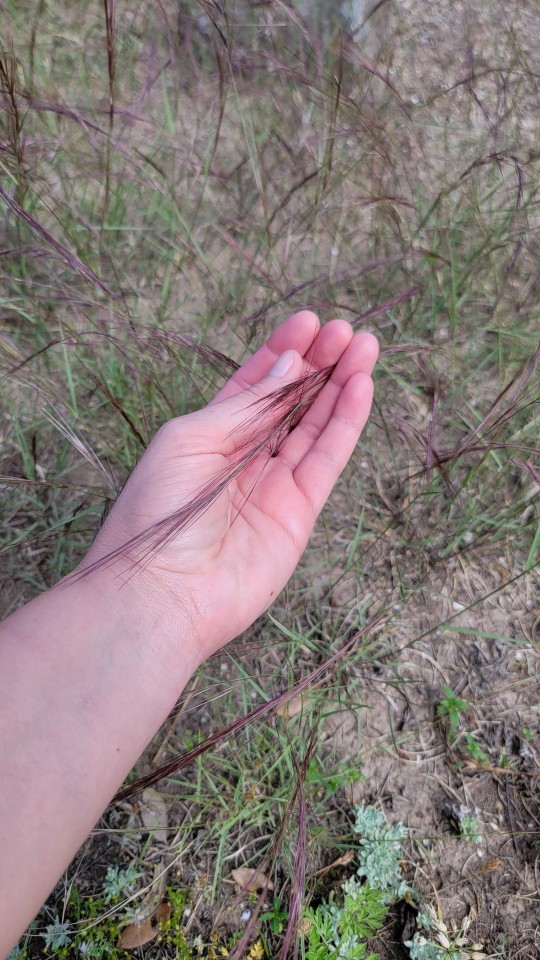
Red harvester ant (Pogonomyrmex barbatus) nests are extremely conspicuous because the ants clear out vegetation growing within a certain radius of the entrance, as well as along favored paths. In this case, at this time of year, two species of grass are not only overrepresented along the perimeter, but actually growing within the normally barren zone: purple three-awn (Aristida purpurea), and what I am reasonably certain is six-weeks fescue (Vulpia octoflora, but I could be wrong). Some studies have shown that plants growing on harvester ant nest rims are more resilient to stress from drought and overgrazing. They certainly give these smaller grasses some relief from competing with the dense and diverse population of herbaceous species that lie outside the nest perimeters. The ants themselves are seed harvesters, and while they gather from a wide variety of sources, having grasses right on their doorstep probably works out to their advantage too.
11 notes
·
View notes
Text
HERE ARE SOME INSECTS:

Tentative ID is Funereal duskywing (Erynnis funeralis). Goth butterfly.
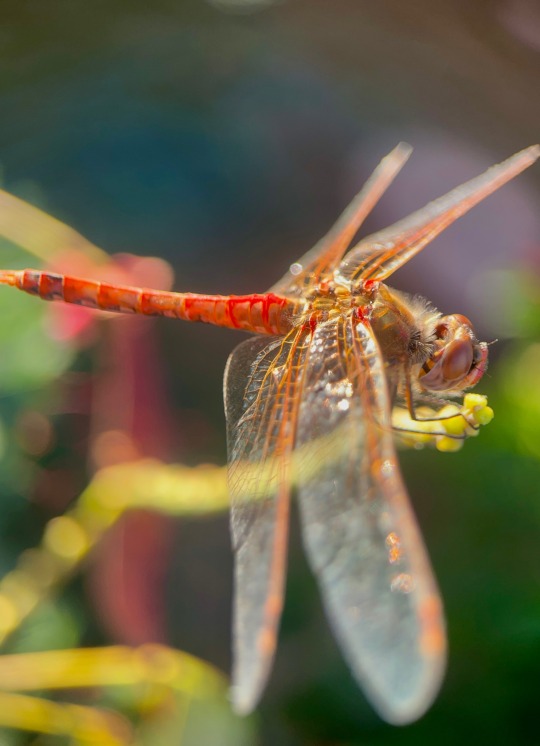
Variegated meadowhawk (Sympetrum corruptum). Red.
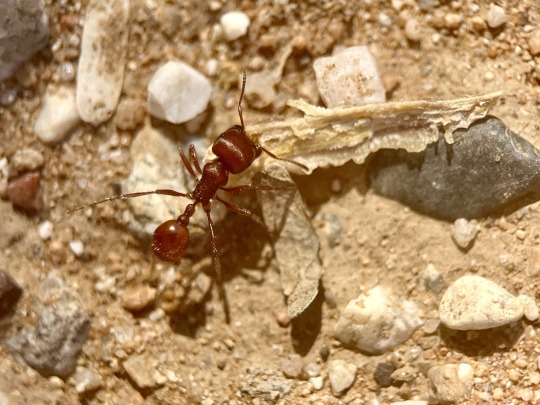
Red harvester ant (genus Pogonomyrmex). Large ant who, with dozens of his compatriots, swarmed up my legs quite a bit before I noticed I’d been standing on their hill. Was not bitten, SOMEHOW. Found out afterward that their bite has a pain rating of 3 out of a possible 4 on the Schmidt Pain Scale. Jesus Christ.
#also the pain can apparently last like 3-6 hours?? I would have just gone home lmao#ants#bugs#insects
19 notes
·
View notes
Text
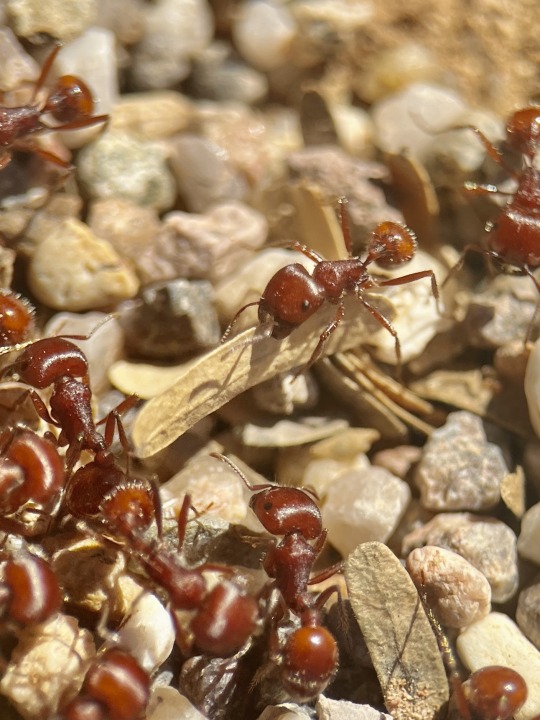

Harvester ants / genus Pogonomyrmex
Rated a 3 out of 4 on the Schmidt sting pain index, with their bite described as “inflaming your nerves for hours rather than minutes … bold and unrelenting.” The red ones also tend to be aggressive.
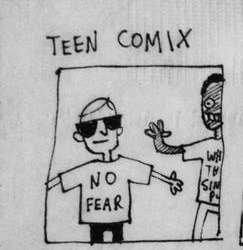
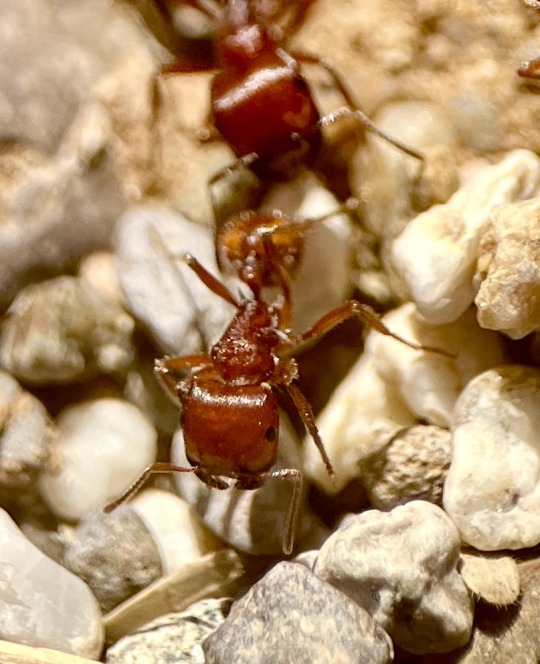

#insects#ant#ants#formicidae#harvester ants#my photos#seriously though I AM scared of these lol#or at least Concerned#just because I’m clumsy and flighty though and I’m scared of accidentally standing on their hill again
8 notes
·
View notes
Text
come si modellano le abilità sociali in un mondo in continua evoluzione?
Comportamenti collettivi in natura: un’analisi di Deborah Gordon Deborah M. Gordon, docente all’Università di Princeton, esplora l’ecologia del comportamento collettivo. Osserva come gli ambienti in continua evoluzione plasmano i comportamenti animali, mettendo in discussione le teorie evoluzionistiche tradizionali. Formica mietitrice rossa: strategie di sopravvivenza nel deserto Il libro di Gordon prende spunto dall’osservazione della formica mietitrice rossa, Pogonomyrmex barbatus, che vive nei deserti del Nuovo Messico. Queste formiche si adattano a un ambiente ostile raccogliendo semi per sopravvivere, gestendo con astuzia la ricerca di cibo e acqua grazie a complessi meccanismi di reclutamento all’interno della colonia. Formica tartaruga arborea: l’arte
0 notes
Text
Les nids de fourmis moissonneuses contribuent à la dynamique des communautés végétales et jouent un rôle important dans l'écologie des invasions et la restauration des écosystèmes
See on Scoop.it - EntomoNews
A new study on the plants that grow along the edge of harvester ant nests suggests they play a role in both invasion ecology and native plant restoration.
Harvester Ant Nest Rims Boost Native, Nonnative Plants Alike
-------
NDÉ
L'étude
Increased cover of native and exotic plants on the rims of harvester ant (Hymenoptera: Formicidae) nests under grazing and drought | Environmental Entomology | 30.113.2023 https://academic.oup.com/ee/advance-article/doi/10.1093/ee/nvad113/7456500
Traduction (extraits)
Les fourmis moissonneuses créent des habitats le long des bords des nids, que certaines plantes utilisent comme refuge. Ces zones-refuges peuvent améliorer la stabilité de l'écosystème face à des perturbations telles que la sécheresse et le pâturage, mais leur rôle potentiel dans l'écologie des invasions n'a pas encore été testé.
Nous examinons ici les effets de la sécheresse et du pâturage sur les zones-refuges autour des nids de deux espèces de fourmis moissonneuses : Pogonomyrmex occidentals et P. rugosus.
Ces résultats suggèrent que les fourmis moissonneuses jouent un rôle important dans l'écologie des invasions et la restauration.
Nous discutons des mécanismes potentiels expliquant pourquoi certaines espèces de plantes utilisent les zones-refuges bordant les nids et comment ces nids de fourmis moissonneuses contribuent à la dynamique des communautés végétales.
[Image] Location and characteristics of 4 study sites: Wupatki, Merriam-grassland, Blue Chute, and Route-66. Wupatki and Merriam-grassland are lower in elevation and host Pogonomyrmex rugosus, while Blue Chute and Route-66 are higher in elevation and host Pogonomyrmex occidentalis. Photographs show P. rugosus worker and nest from Wupatki site and P. occidentalis worker and nest from Route-66 site.
Bernadette Cassel's insight:
(Re)lire aussi
Ingénierie écologique : les fourmis moissonneuses - Le zoom de la rédaction - France Inter - De www.franceinter.fr - 14 juin 2012, 18:44
Recrutement réussi de fourmis moissonneuses - De www.cnrs.fr - 12 avril 2014, 22:17
Plaine de la Crau: Des fourmis pour rendre la nature plus propre - De www.20minutes.fr - 5 mai 2014, 16:09
[Vidéo] La Crau : des fourmis au secours des scientifiques - De provence-alpes.france3.fr - 29 mai 2014, 23:44
Comment la nature peut sauver la nature - De www.lemonde.fr - 31 mai 2015, 08:19
Quand la nature sauve la nature - De www.universcience.tv - 1 juin 2015, 09:18
L’éco-ingénierie pour sauver la nature, par la nature : des fourmis, réparatrices d’un écosystème unique - De blogues.radio-canada.ca - 28 octobre 2015, 11:34
Les fourmis restaurent les pelouses sèches méditerranéennes - De www.cnrs.fr - 28 avril 2020, 11:49
Nature = Futur ! Des fourmis agronomes - De www.youtube.com - 28 avril 2020, 13:05
Restaurer la nature, un travail de fourmis ? - De theconversation.com - 27 septembre 2020, 19:51
Des fourmis agronomes - De www.youtube.com - 27 septembre 2020, 19:42
C’est une amitié évolutive vieille de 60 millions d'années qui existe entre les fourmis et les plantes - De www.gurumed.org - 4 avril 2023, 18:29
Voir également
'Fourmi moissonneuse Pogonomyrmex' in EntomoNews
https://www.scoop.it/topic/entomonews/?&tag=Fourmi+moissonneuse+Pogonomyrmex
0 notes
Text
I had a nice time drawing a Pogonomyrmex occidentalis pupae today. I'm trying to improve my drawing skills-- There are many problems here.
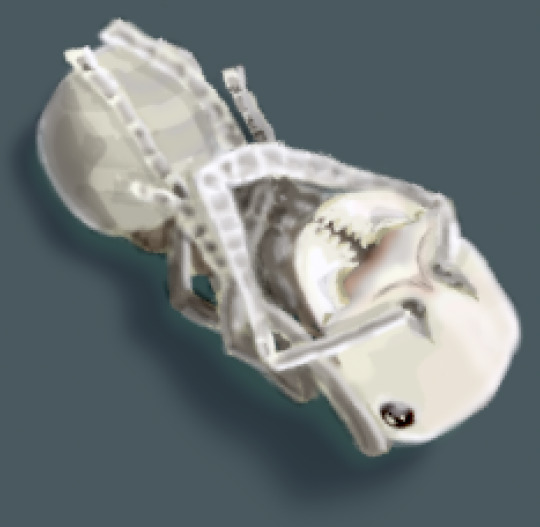
-shadow is off, should be more shadow under the gaster (I think?)
-doesn't look translucent enough
-It's overworked, but I claim that's my "style" (not really LOL)
-I made a mess with the blur tool. Had to clean it up, but it still feels blurred. No more blur for me.
-I don't know what I'm doing with that blue shadow It's supposed to be reflected light?
Like it's not bad, the mandibles look nice. And I feel like I understand the geometry of how ants fold their legs better.
Could not find a reference image of an ant from *below* to see exactly how the legs attach. Looked at one of my pet ants and annoyed her greatly!
#drawing#endless invertober#invertober every month#invertober#ant#pogonomyrmex#harvester ants#digital painting#art is hard
12 notes
·
View notes
Text
a team of florida harvester ants (Pogonomyrmex badius) carrying a yellowjacket corpse back to their nest (Florida, 4/25/22). Harvester ants feed mainly on seeds which are stored in large subterranean granaries, but won’t pass up the opportunity to scavenge insects as well.
Found in dry, sandy habitats along the southeastern coastal plain, P. badius is only Pogonomyrmex native to the region, the rest being found mainly in southwestern deserts. It’s also unique among its genus for its dimorphic worker castes- smaller, more agile minor workers and larger majors with huge heads and jaws for crushing seeds and dismembering enemies.
Pogonomyrmex workers also have the most toxic venom known from any insect (or at least, the most toxic to mammals). They have an extremely painful sting to match, though it’s not as bad as some larger insects that inject a greater quantity of less toxic venom.
#ants#hymenoptera#pogonomyrmex badius#harvester ants#pogonomyrmex#florida harvester ant#bugs#bugblr#insects#entomology#florida#dead insect
181 notes
·
View notes
Photo
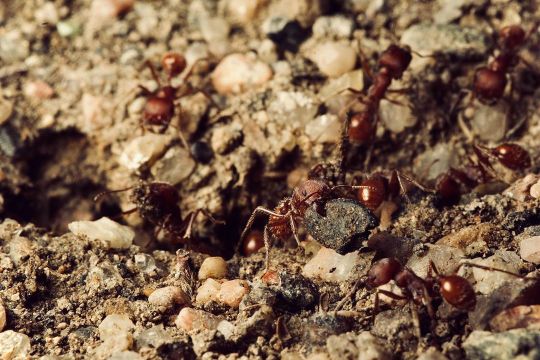
Signs of springs amongst the undergrowth. Harvester ants working hard to clear the mound #macro #macrophotography #photography #myrmecology #entomology #pogonomyrmex #laowa60mm #laowa60mmmacro #manuallens #nikon #nikond3200 #nature #hymenoptera #Formicidae #ants #ant #harvesterant #harvesterants #myrmicini https://www.instagram.com/p/B9iF_0pFzai/?igshid=eshmt99r7wxj
#macro#macrophotography#photography#myrmecology#entomology#pogonomyrmex#laowa60mm#laowa60mmmacro#manuallens#nikon#nikond3200#nature#hymenoptera#formicidae#ants#ant#harvesterant#harvesterants#myrmicini
0 notes
Text
My idea of Fun
My idea of Fun
New place, new critters and plants. There’s people and conversations too, but the time to wander quietly was a welcome moment. Nothing to worry about, nothing tugging at my conscience to get done. Just me and whatever I can find.
Sticky glands help this bur propagate, I’m guessing.
Tiny yellow compositae
Ants moving slow in the cold weather make for good photos.
Pogonomyrmex rugosus, the…
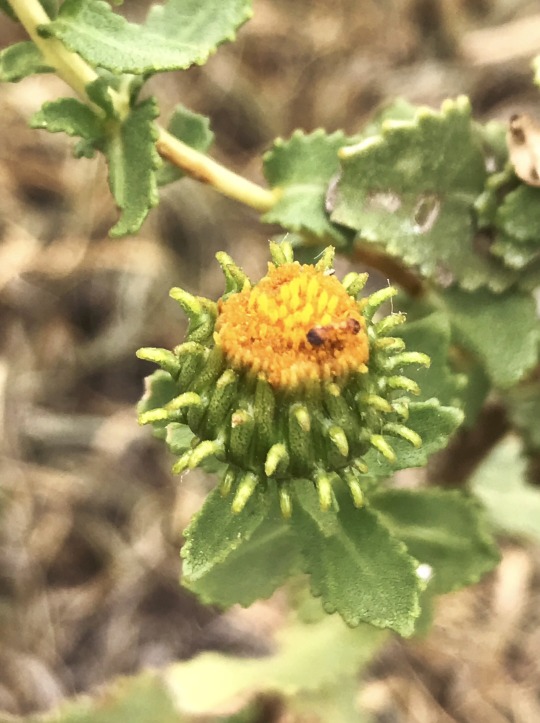
View On WordPress
0 notes
Text
feeling absolutely overwhelmed by the scale of the past rn
#personal#I just found out that there are trace fossils of ant nests and I want to cry#they’re similar to modern pogonomyrmex nests#traces of past lives are kept alive in the hands of their descendants#nothing is truly lost to time even though the ones who carved the path may be gone
11 notes
·
View notes
Photo

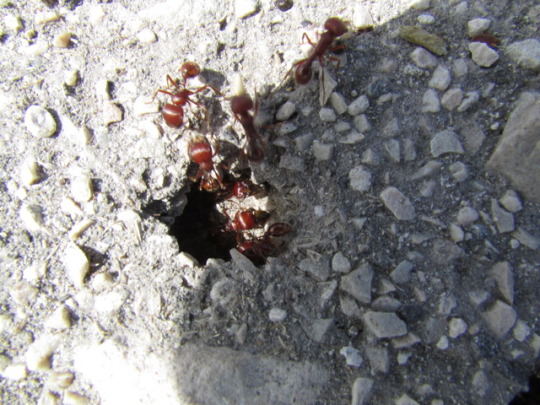
THROWBACK THURSDAY
Red harvester ants (Pogonomyrmex barbatus), outside Sinton, TX. June 2013.
This is a species common throughout the southern US, found in grasslands, prairies, and even deserts. Harvester ants their nest in clay and rocky soils, removing vegetation around the entrance to prevent the roots from destroying their tunnels. The nest itself may go as deep as 20 feet (~6m), contain around 10,000-12,000 individuals, and live up to two decades. As the name implies, these ants collect seeds from nearby plants to feed their colony, although they also scavenge for dead insects.
When the colony dies or the nest is abandoned, the seeds that remain within the nest may germinate and result in new plant communities.
5 notes
·
View notes
Photo
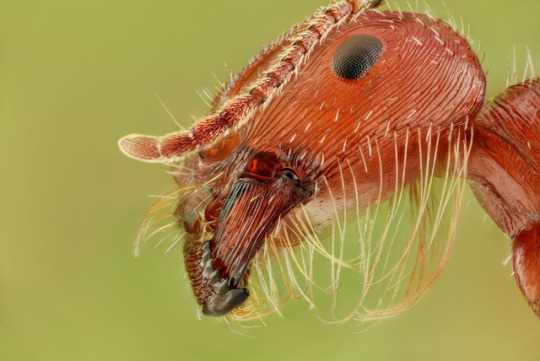
California Harvester Ant by Yellow Snapper http://flic.kr/p/WbAtxs
1 note
·
View note